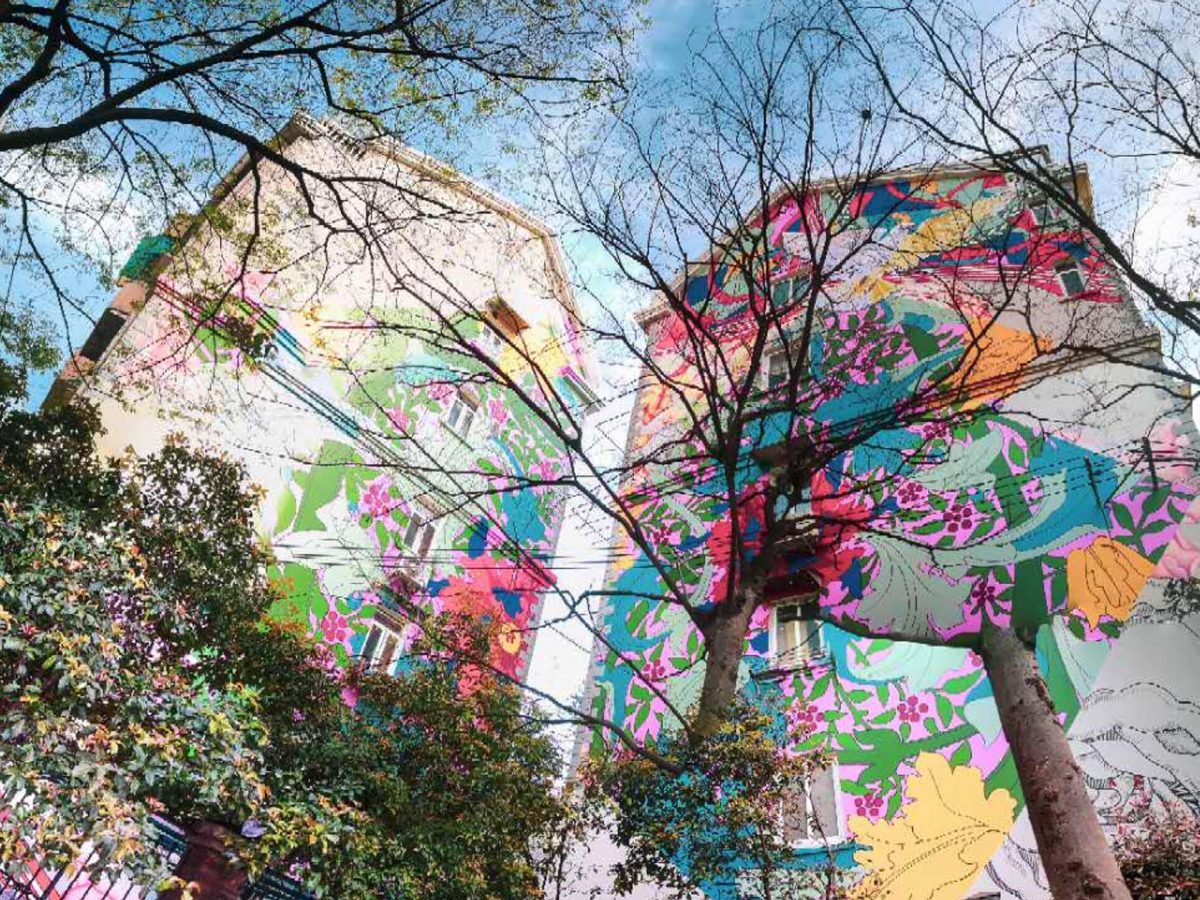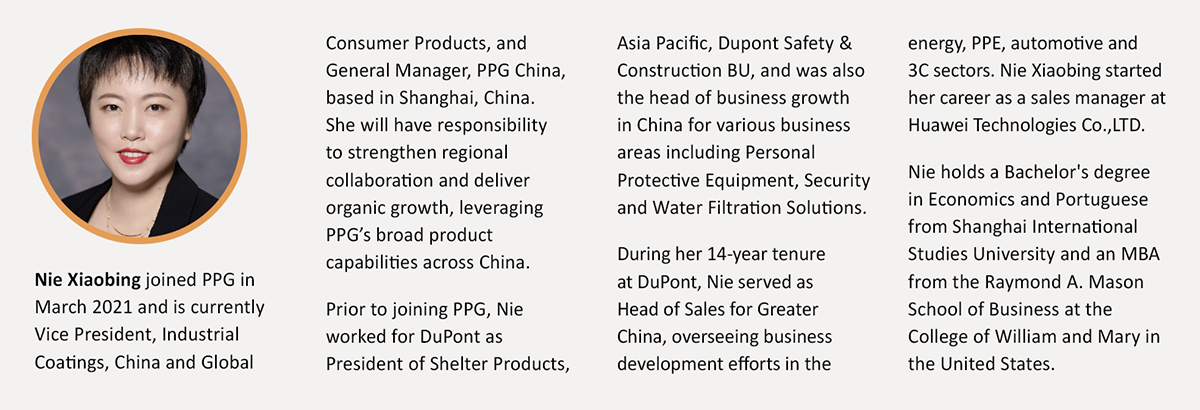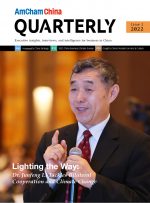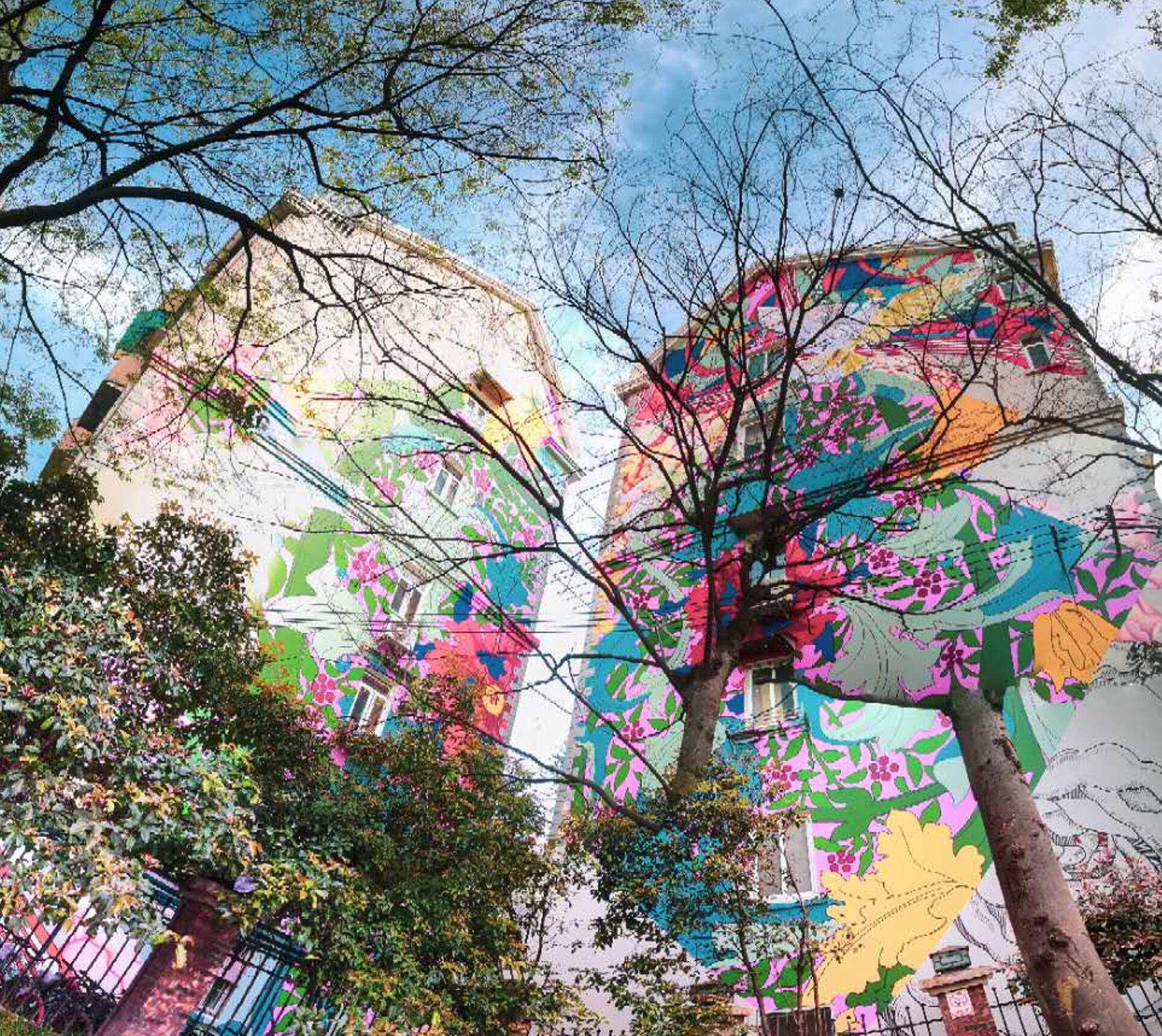PPG Paints a Greener Future
By Norris Tangen
PPG is a global maker of paints, coatings, and specialty materials and are a recognized leader in innovation, color, and sustainability. With operations across 75 countries, the company also boats an impressive environmental record dating back to its early operations in the 19th century. The AmCham China Quarterly caught up with PPG’s General China Manager and Vice President of Industrial Coatings, China, and Global Consumer Products, Nie Xiaobing, to discuss the organizations modern environmental goals, COVID-19’s impacts and opportunities, and creating colorful communities.

Photo courtesy of PPG
In 1883, Captain John Baptiste Ford and John Pitcairn Jr. founded Pittsburgh Plate Glass Company in Creighton, Pennsylvania. However, the small local business was not destined to remain so for long. The company found rapid success, soon becoming the United States’ first commercially successful producer of high-quality, thick flat glass using the plate process. By 1900 the company, which became known as the “Glass Trust” had grown to become the second largest producer of paint in the US. As of 2022, the company now known as PPG Industries is a multi-billion-dollar corporation with a business network spanning more than 75 countries. Today, PPG has grown and diversified to include a much wider array of products under its ever-expanding umbrella, providing paints, coatings and specialty materials for construction, consumer goods, and industrial and transportation markets.
PPG’s China General Manager and Vice President of Industrial Coatings, China, and Global Consumer Products, Nie Xiaobing, shares that the company holds a special distinction within China, “PPG was one of the few global chemical companies that first invested in China in the late 1980s.” Since that early investment, PPG’s China operations have grown to include 18 manufacturing plants, five R&D enters across mainland China, and around 4,000 employees. In China, Nie says, the company primarily produces and sells aerospace materials, automotive OEM coatings, industrial coatings, packaging coatings, architectural coatings, automotive refinish, light industrial coatings, protective and marine coatings, along with other specialty materials.
An Impressive Environmental Record
PPG has an undoubtedly impressive environmental record. In fact, the company was the world’s first plate glass plant to power its furnaces with locally produced natural gas, an innovation which rapidly stimulated widespread industrial use of the cleaner-burning fuel. More recently, PPG outlined its initial sustainability goals in 2012, but the company periodically updates them due to achievement of goals and depending on the ever-changing makeup of their portfolio. Nie says that, over the past decade, “PPG has remained steadfast in our commitment to develop innovative products and sustainable solutions that create values for our customers, shareholders, and all of our stakeholders.” As of late, the company has been focused on bolstering its Environment, Social, and Governance (ESG) commitments. Nie shares, “We appointed our first Vice President of Global Sustainability; established a framework of Board governance of our ESG efforts; integrated the Task Force on Climate-Related Financial Disclosures (TCFD) Framework into our strategic planning process; and established groundwork to set science- based targets aligned with the Paris Agreement.”
Nie says that as of launched its 2020 Sustainability Report. The Report, she says, serves to “highlight the company’s strong, continued progress against key ESG areas.” Nie provides some achievements in ESG examples of including: 35% of sales from sustainably advantaged products and processes, including the launch of antibacterial and antiviral products, against the goal of 40% by 2025; 35% of manufacturing and research and development locations with zero process waste to landfill; and a 24% reduction in greenhouse gas emissions since 2017.
PPG’s comprehensive framework for sustainability goals also extends to their suppliers, for whom the company outlines a sustainable code of conduct. Nie says this is to ensure that their suppliers around the world are equally committed to sustainability as a core value. In 2020, PPG spent approximately $9.8 billion USD with more than 30,000 suppliers globally for raw materials, indirect products and services, and the transport of goods. Nie lays out the company’s expectations, “We expect these suppliers and their subcontractors to fully comply with all applicable laws and to adhere to internationally recognized environmental, social and governance standards. Our Global Code of Ethics, Supplier Sustainability Policy and Global Supplier Code of Conduct clearly state our expectations for every supplier.”

Colorful Communities
The Colorful Communities® program is a unique initiative Nie highlights from PPG. The global program, which aims to enhance, protect, and beautify the neighborhoods in communities in which PPG operates around the world, through employee volunteerism, financial contributions, and PPG products, received the 2019 Charity Project Award at the ninth China Charity Festival. In China, this year, the program has worked with schools in particular, including schools in Shanghai, Jiangmen, and Tianjin. For each project, besides employee volunteers, PPG donates products, services, and even medical equipment like masks to the schools. The end result provides brighter, warmer, and more open environments that, PPG hopes will create a better environment for children and contribute to education innovation in China. After a strong start, in the future, PPG will expand the scope of the project to cover all regions across China.
Profitability Soars Despite a Global Pandemic
Despite a global pandemic in 2021, Nie says PPG achieved all-time record sales of $16.8 billion USD, up 21% compared to the prior year. Nie shares that those numbers were led by a strong organic growth of 10%, in addition to several strategic acquisitions. Some of those acquisitions included Ennis-Flint which now forms PPG’s traffic solutions strategic business unit, along with VersaFlex, Cetelon, Wörwag, and Tikkurila. Nie says these acquisitions are key drivers of growth for the organization, “These five acquisitions added $1.7 billion of annualized revenue, expanded our sustainable product offerings and moved us into new markets.”
While the company saw increased sales during the pandemic, Nie still says it is a challenge to navigate the ever-evolving pandemic. However, she does add that she is proud of how the company has proactively adapted and managed the crisis, “We’ve learned to adapt and manage through a myriad of obstacles, including global supply chain disruptions, raw material scarcity, labor shortages and overall cost inflation.”

This article is from the AmCham China Quarterly Magazine (Issue 2, 2022). To access the entire publication for free, sign up on our member portal here.

